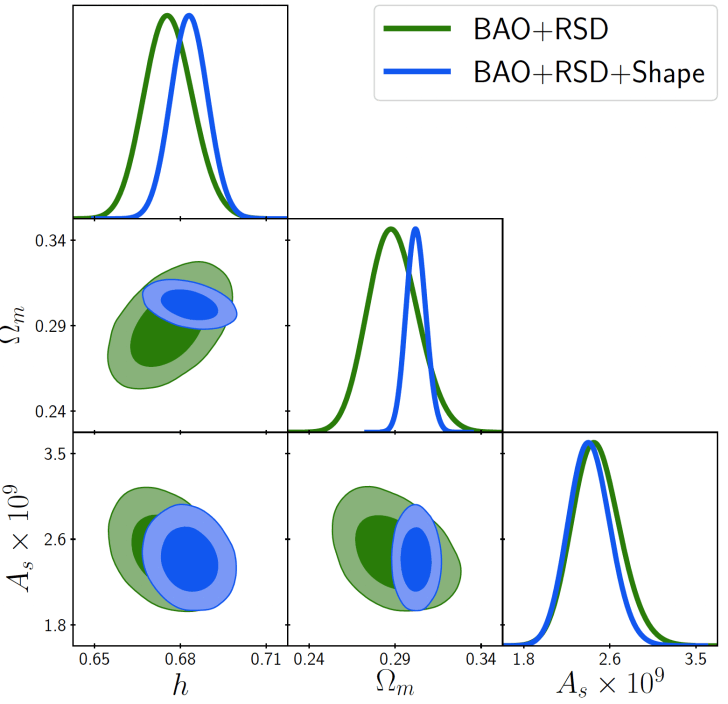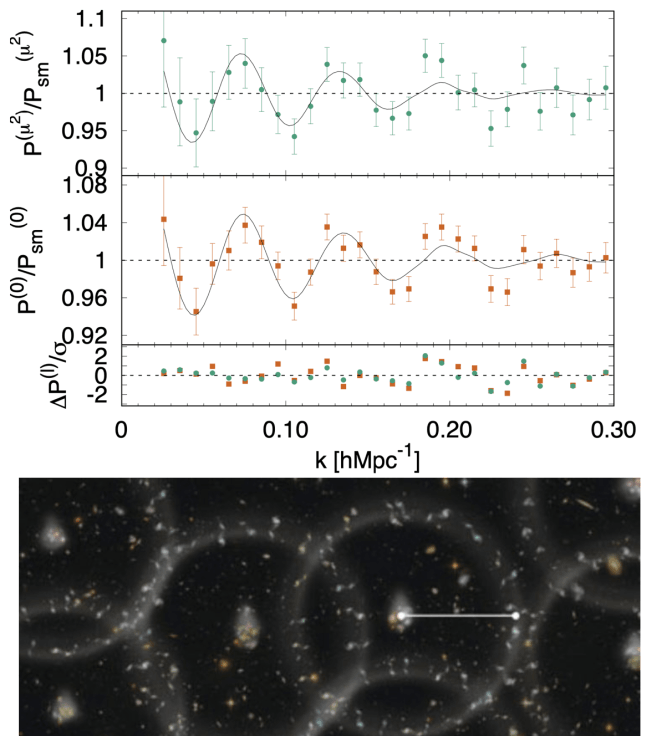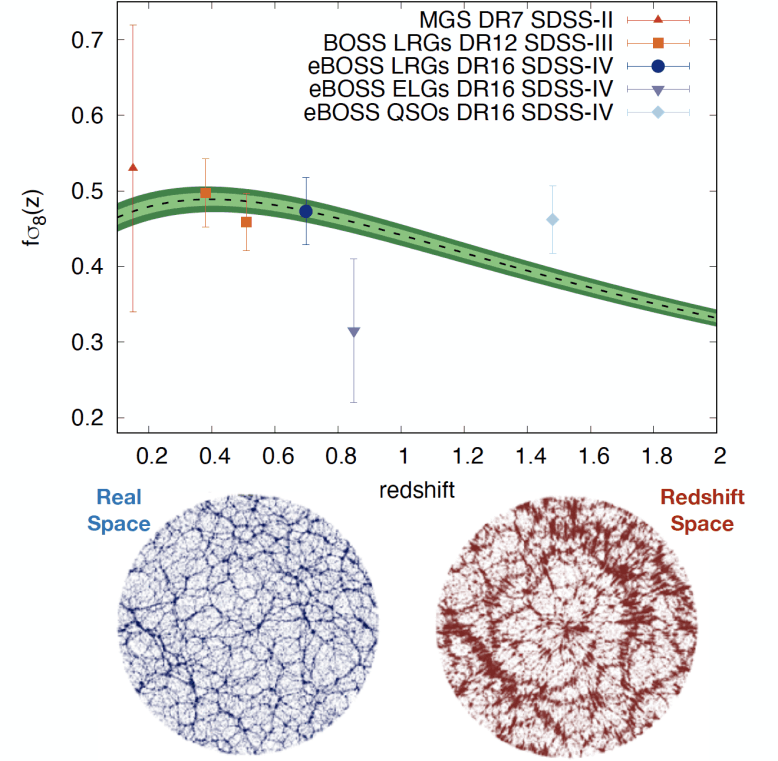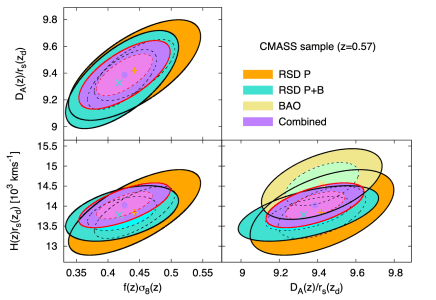The Shape of the Power Spectrum: a new observable in cosmology.
State-of-the-art techniques focus on the Baryon Acoustic Oscillation (BAO) signal to measure the expansion rate of the Universe in units of the sound horizon scale. Additionally, the amplitude of the isotropic and anisotropic power spectrum signals can be used to constrain the growth of structure of the Universe, via the galaxy's peculiar velocities: the so-called Redshift Space Distortions (RSD). These two observables, BAO+RSD, have been key for extracting cosmological information from spectroscopic galaxy maps once a cosmology model is assumed. Further cosmology-relevant information has been for a long time unused, as it was complemented by CMB observations. This information is related to the shape of the transfer function of the matter power spectrum after recombination, and is also contained in the observed galaxy power spectrum. Such information can be compressed in just one extra cosmology parameter in addition to the usual BAO and RSD parameters: the Shape. By using all BAO, RSD and Shape, galaxy clustering measurements put competitive constraints on the amount of matter in the Universe, or the sum of the neutrino masses.
Ref. Brieden, GM, Verde 2023, Brieden, GM, Verde 2022a, Brieden, GM, Verde 2022b, Brieden, GM, Verde 2021a, Brieden, GM, Verde 2021b




